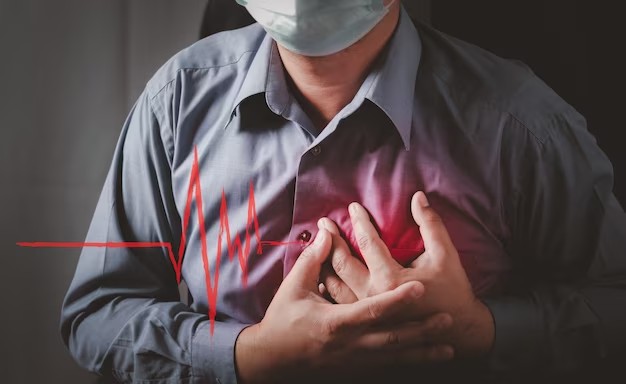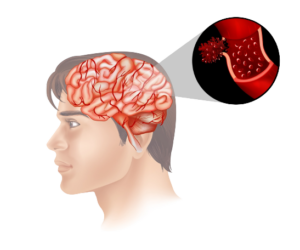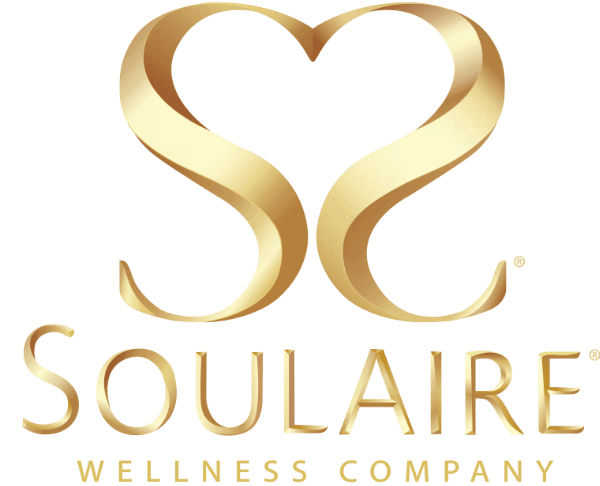
Difference Between Heart Attack and Stroke
Heart attacks and strokes are two of the most serious medical emergencies that require immediate attention. Though they share certain similarities, they are fundamentally different conditions that affect distinct areas of the body. When a heart attack happens, it’s because something stops the blood from flowing to a part of the heart.
This is often because of a blood clot, and it can hurt the heart muscle. On the other hand, a stroke happens when the blood supply to a part of the brain is interrupted or reduced, preventing brain tissue from getting oxygen and nutrients, leading to brain cell death.
This blog aims to delve deeper into these two critical health events, exploring their causes, symptoms, treatments, and preventative measures. By enhancing our understanding of heart attacks and strokes, we can better equip ourselves with the knowledge to recognize these conditions early and respond appropriately, potentially saving lives.
Heart Attack Explained: Causes, Symptoms, and Treatment

A heart attack, medically known as a myocardial infarction, is a life-threatening event that occurs when the flow of blood to the heart muscle is obstructed, typically by a blood clot. This interruption deprives the heart muscle of vital oxygen and nutrients, causing damage or death to the affected area of the heart.
The primary cause of a heart attack is coronary artery disease, where plaque (a buildup of fat, cholesterol, and other substances) accumulates in the arteries, narrowing them and reducing blood flow.
Symptoms often include chest pain or discomfort, shortness of breath, cold sweat, fatigue, dizziness, and nausea. However, these can vary, and some people may experience minimal symptoms or none at all.
Treatment for a heart failure usually involves medications to dissolve the clot and restore blood flow, along with lifestyle changes to manage risk factors. In more severe cases, surgical procedures like angioplasty or bypass surgery might be necessary. Immediate medical attention is crucial to minimize heart damage and improve survival chances.
Understanding Stroke: Causes, Symptoms, and Intervention

A stroke is a severe health problem that happens when the blood flow to a part of your brain is stopped or lessened. This makes the brain tissue lose out on the important oxygen and nutrients it needs. This event can be caused by two main factors: a blocked artery leading to an ischemic stroke, or the leaking or bursting of a blood vessel resulting in a hemorrhagic stroke.
The symptoms of a stroke often appear without warning and may include facial drooping, weakness or paralysis, confusion, trouble speaking, and numbness or weakness in the face, arm, or leg. It’s crucial to seek immediate emergency treatment when these signs appear, as prompt intervention can significantly improve the outcome.
Understanding the causes, recognizing the symptoms, and knowing how to intervene when a stroke occurs is vital. It not only helps in providing immediate assistance but also contributes to preventing long-term damage and improving recovery chances.
What is the key Difference Between Heart Attack and Stroke?
Heart attacks and strokes are both serious medical emergencies, but they differ in causes, symptoms, and the areas of the body they affect. A heart attack happens when a part of the heart doesn’t get enough blood because something blocks it, like a blood clot. This can hurt or even break a bit of the heart muscle. Symptoms typically include chest pain, shortness of breath, and discomfort in other areas of the upper body.
Conversely, a stroke is a brain-related incident that happens when the blood supply to part of the brain is interrupted or reduced, depriving brain tissue of oxygen and nutrients. A stroke can happen when an artery gets blocked (ischemic stroke) or when a blood vessel leaks or bursts (hemorrhagic stroke)… Common signs include sudden numbness or weakness, especially On one side of the body, you might feel mixed up, and have difficulty talking, seeing, or walking.
Understanding these key differences can help in recognizing and responding to these events appropriately.
Risk Factors for Heart Attack and Stroke
Risk factors for heart attack and stroke often overlap, as they both involve disruptions to the normal flow of blood in the body.
Having high blood pressure is a big problem for these two things. If your blood pressure is always too high, it makes it harder for your blood to flow to your heart, and other body parts like the brain, kidneys, pancreas and eyes.
High cholesterol is another common risk factor. Cholesterol is a fatty substance that’s found in your blood. Too much bad cholesterol (LDL) can stick to the walls of your arteries and form plaques, which can lead to blockages resulting in a heart attack or stroke.
Tobacco use, including smoking and vaping, is a major risk factor for heart attacks and strokes. Both increase heart rate and blood pressure while reducing the amount of oxygen-rich blood delivered to your body’s tissues and organs.
Other modifiable risk factors include obesity, poor diet, lack of physical activity, and diabetes. Each of these can independently raise the risk of heart disease and stroke, but they often occur together.
Understanding and managing these risk factors can significantly reduce the likelihood of experiencing a heart attack or stroke.
Prevention Strategies: Reducing the Risk of Heart Attack and Stroke
Preventing heart attacks and strokes largely centers around managing the known risk factors for these conditions. Here are some strategies:
- Healthy Diet:
Eat a lot of healthy foods like fruits, veggies, whole grains, lean meats, and good fats. Limit intake of sodium, saturated fats, and added sugars.
- Regular Exercise:
Engage in at least 150 minutes of moderate-intensity or 75 minutes of high-intensity physical activity each week.
- Maintain a Healthy Weight:
Achieving and maintaining a healthy weight can reduce the risk of heart disease and stroke. The Body Mass Index (BMI) is often used to determine whether a person’s weight is healthy.
- Quit Smoking:
Smoking raises the risk of heart disease and stroke. Quitting smoking can significantly lower this risk over time.
- Limit Alcohol Intake:
Drinking alcohol in moderation or not at all can reduce the risk of heart disease and stroke.
- Manage Stress:
Chronic stress may contribute to heart disease risk. Methods like mindfulness, meditation, and yoga can be useful for handling stress.
- Regular Check-ups:
Regular health screenings can help detect conditions like high blood pressure, high cholesterol, and diabetes early, allowing for timely intervention.
Keep in mind that you can always begin to make healthier decisions, no matter the time. Each move you make toward a healthier life lowers your chances of problems.
How EECP Therapy Can Help to Manage Heart Attacks and Stroke?
Enhanced External Counterpulsation (EECP) therapy is a non-invasive outpatient treatment that has been approved by the FDA for managing refractory angina and heart failure. It works by improving blood flow to the heart, which can help manage symptoms associated with heart attacks.
In EECP therapy, they put special cuffs that can blow up and shrink around your legs. These cuffs follow your heartbeat and help make your heart stronger. This process increases venous return, raises cardiac preload, and enhances overall cardiac output.
The enhanced blood flow generated by EECP therapy can also increase the delivery of oxygen-rich blood to the heart muscle, reducing symptoms of heart failure. Furthermore, it can stimulate the opening or formation of collateral blood vessels, a natural bypass around narrowed or blocked arteries.
While the primary use of EECP therapy is for heart conditions, its ability to enhance blood flow might also have potential benefits in managing certain stroke conditions. But we still need to learn more about this topic through more research.
Conclusion: The Importance of Awareness and Early Detection
Awareness and early detection play a crucial role in managing the risk of heart attacks and strokes. Understanding the risk factors, such as high blood pressure, high cholesterol, smoking, obesity, poor diet, physical inactivity, and diabetes, is the first step toward prevention.
Adopting a healthy lifestyle that includes a balanced diet, regular exercise, maintaining a healthy weight, quitting smoking, moderating alcohol intake, and managing stress can significantly reduce these risks.
Regular health screenings are also vital for early detection of conditions that might increase the risk of heart disease and stroke. Conditions like hypertension, high cholesterol, and diabetes may not show any symptoms until they have caused serious harm. Therefore, routine check-ups allow for early intervention, which can prevent or delay the onset of severe complications.
Innovative treatments like Enhanced External Counterpulsation (EECP) therapy offer additional options for managing heart conditions. However, it’s important to discuss any treatment options with your healthcare provider to understand the potential benefits and risks.
In conclusion, awareness, lifestyle modifications, and early detection through regular health screenings are key to reducing the risk of heart attacks and strokes. Keep in mind that each move you make to live healthier is like taking a step towards having a stronger heart.

